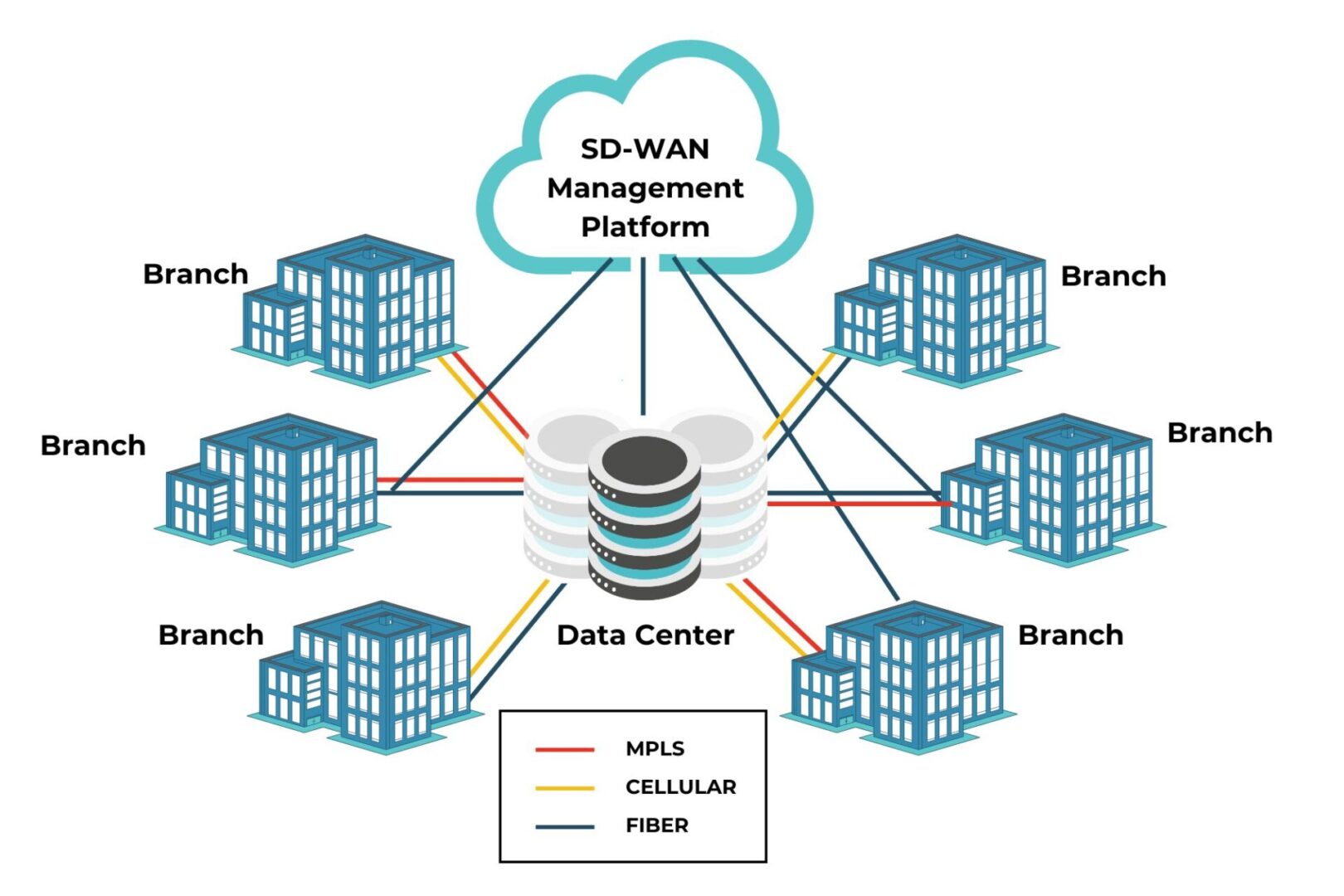
SD-WAN applies software-defined networking (SDN) principles to wide area networks (WANs), which means it decouples networking logic from the underlying WAN hardware. SD-WAN management involves orchestrating and optimizing software-defined WAN workflows across the entire architecture, ideally from a single, centralized platform. This SD-WAN management guide explains how this technology works, the potential benefits of using it, and the best practices to help you get the most out of your SD-WAN deployment.
How does SD-WAN management work?
A typical WAN architecture uses a variety of links, including MPLS, wireless, broadband, and VPNs, to connect branches and other remote locations to enterprise applications and resources. SD-WAN is a virtualized service that overlays this physical architecture, giving software teams a unified software interface from which to manage network traffic and workflows across the enterprise. SD-WAN management decouples network control functions from the gateways and routers installed at remote sites, preventing administrators from having to manage each one individually. It also reduces the reliance on manual CLI rules and prompts, which are time-consuming and prone to human error, allowing teams to deploy policies across an entire network at the same time.
SD-WAN can also use multiple connection types (including 5G LTE, MPLS, and fiber) interchangeably, switching between them as needed to ensure optimal performance. Plus, SD-WAN management enables organizations to use virtualized and cloud-based security technologies (such as SASE) to secure remote traffic to SaaS, web, and cloud resources. This allows organizations to reduce traffic on expensive MPLS links by utilizing less-costly cellular and public internet links to handle cloud-destined traffic.
The benefits of SD-WAN management
Cost reduction
MPLS links provide a secure connection between branches and centralized data center resources, but the bandwidth is far more expensive than fiber or cellular. SD-WAN reduces branch bandwidth costs by using less expensive channels for traffic that’s destined for resources online and in the cloud, reserving MPLS bandwidth for enterprise traffic alone.
Improved performance
To optimize the performance of a traditional WAN, teams must create specific routing, bandwidth utilization, and load-balancing rules for each branch and appliance, and hope these policies adequately predict and resolve any potential issues. SD-WAN management uses technologies like application awareness and guaranteed minimum bandwidth to automatically optimize network performance.
Automation & orchestration
By decoupling network control functions from the underlying WAN hardware, SD-WAN enables automatic device deployments, load balancing, failover, and intelligent routing. Teams can orchestrate automated workflows across the entire network architecture from a centralized software platform, to make deployments and configuration changes more efficient.
Enhanced security
Branch networks often suffer from security gaps due to the difficulty in extending enterprise security policies and controls to remote sites. Securing branch traffic usually means backhauling all traffic through the data center’s firewall, eating up expensive MPLS bandwidth and introducing latency for the rest of the enterprise. Some organizations opt to deploy security appliances at each branch site, which is costly and gives network administrators more moving parts to manage.
SD-WAN enables the use of cloud-based security solutions like SASE and Zero Trust Edge that extend enterprise security defenses to branch network traffic without backhauling or additional hardware. SD-WAN automatically identifies traffic destined for web or cloud resources and routes it through the cloud-based security stack across less-expensive internet links, saving money and reducing management complexity while improving branch security.
How to get the most out of your SD-WAN deployment
There are a variety of SD-WAN deployment models, each of which solves a different WAN problem, so it’s important to assess your organization’s requirements and capabilities to ensure you build an architecture that meets your needs. It’s also critical to consider the scalability, adaptability, security, and resilience of your SD-WAN deployment to prevent headaches down the road.
For example, using a vendor-neutral platform like Nodegrid to host SD-WAN allows you to easily expand your branch networking capabilities with third-party software for automation, security, monitoring, troubleshooting, and more without deploying additional hardware, allowing you to easily scale and adapt to changing business requirements. Nodegrid also consolidates branch functions like routing, switching, out-of-band serial console management, SD-WAN management, and SASE network security in a single device for cost-effective branch deployments. Plus, Nodegrid enables isolated management infrastructure that’s resilient to threats and provides a safe recovery environment from ransomware attacks and network failures.
Ready to get started on your SD-WAN deployment?
Nodegrid unifies control over mixed-vendor hardware and software solutions across the enterprise network architecture for efficient, streamlined SD-WAN management. Request a free demo to learn more.
